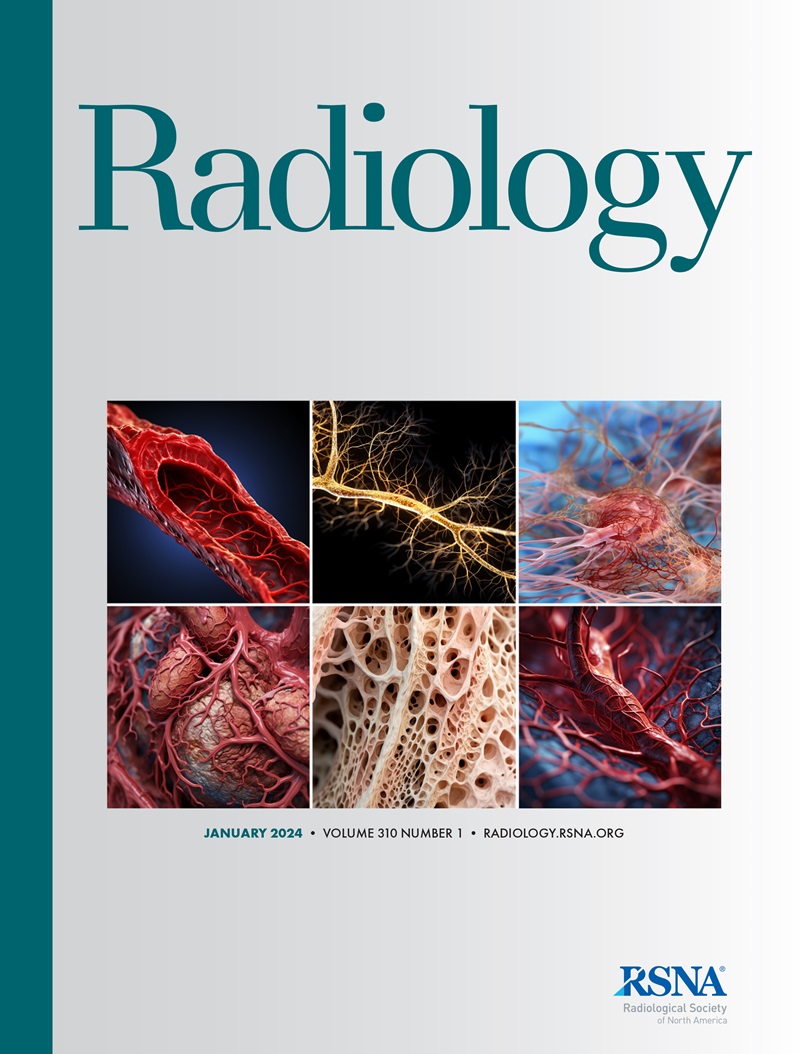摘要
背景 代谢功能障碍相关性脂肪性肝病(MASLD)是一项日益严峻的全球性健康挑战,有证据表明肝脏炎症和纤维化是一个异质性过程。目的 使用磁共振弹性成像(MRE)测量肝脏机械性能异质性,并评估其作为 MASLD 患者组织炎症和纤维化生物标志物的潜力。材料和方法 在临床前和临床研究中,通过三维矢量 MRE 像素直方图分析剪切刚度和损失模量来评估 MASLD 的机械组织异质性。临床前研究涉及 25 只每月接受检查的大鼠,而临床研究分析了 179 名参与者在两项前瞻性研究(2015 年 9 月至 2022 年 11 月)中的数据,其中包括一些在治疗前和治疗后 MRE 检查中接受减肥手术的参与者。每次检查都计算了剪切硬度和损失模量的平均值和变异系数 (CV)。使用非参数检验和斯皮尔曼相关系数将 MRE 得出的组织力学与活检证实的纤维化和炎症进行比较,并评估与门静脉压力和组织病理学肝纤维化的相关性。结果 临床前研究显示,在肝硬化肝脏中,损失模量 CV 与门静脉压力和纤维化面积比变化呈正相关(ρ = 0.52 [P = 0.008] 和 0.55 [P=0.005])。临床研究显示,在 10 名健康志愿者(中位年龄为 36.5 岁;IQR 为 34.0-38.8 岁;5 名女性)和 169 名 MASLD 患者(中位年龄为 50.1 岁;IQR 为 41.0-58.2 岁;118 名女性)中,峭壁僵化的 CV(从健康参与者的 0.12 到 0.随着纤维化和炎症严重程度的增加,峭壁硬度(从健康参与者的 0.12 到 4 期纤维化参与者的 0.30)和损失模量(从健康参与者的 0.31 到 3 级炎症参与者的 0.51)的 CV 值也分别增加。在接受减肥手术的 36 名参与者中,峭壁僵硬度的 CV 值在 1 年的随访中有所下降,从 0.16(IQR,0.14-0.18)降至 0.14(IQR,0.12-0.16)(P = .009)。结论 MRE 评估的组织机械异质性与 MASLD 的进展呈正相关,具有作为肝病严重程度和治疗干预生物标志物的潜力。ClinicalTrials.gov Identifier:NCT02565446 采用 CC BY 4.0 许可发布。本文有补充材料。另请参阅本期Moura Cunha的社论。Background Metabolic dysfunction-associated steatotic liver disease (MASLD) is a growing global health challenge, with evidence indicating that hepatic inflammation and fibrosis are heterogeneous processes. Purpose To measure liver mechanical property heterogeneity using MR elastography (MRE) and evaluate its potential as a biomarker for tissue inflammation and fibrosis in patients with MASLD. Materials and Methods Mechanical tissue heterogeneity in MASLD was assessed at three-dimensional vector MRE pixel-wise histogram analysis of shear stiffness and loss modulus in preclinical and clinical studies. The preclinical study involved 25 rats that were examined monthly, whereas the clinical study analyzed data from 179 participants across two prospective studies (September 2015 to November 2022), including some who underwent bariatric surgery at pretreatment and posttreatment MRE examinations. Mean and coefficient of variation (CV) of shear stiffness and loss modulus were calculated for each examination. Nonparametric tests and Spearman correlation coefficient were used to compare MRE-derived tissue mechanics with biopsy-confirmed fibrosis and inflammation and assess correlations with portal pressure and histopathologic hepatic fibrosis. Results The preclinical study showed that, in cirrhotic livers, CV of loss modulus positively correlated with portal pressure and fibrosis area ratio variation (ρ = 0.52 [P = .008] and 0.55 [P = .005], respectively). The clinical study showed that, in 10 healthy volunteers (median age, 36.5 years; IQR, 34.0-38.8 years; five females) and 169 participants with MASLD (median age, 50.1 years; IQR, 41.0-58.2 years; 118 females), CV of sheer stiffness (from 0.12 to 0.30 in healthy participants to participants with stage 4 fibrosis) and loss modulus (from 0.31 to 0.51 in healthy participants to participants with grade 3 inflammation) increased with increasing severity of fibrosis and inflammation, respectively. In 36 participants who underwent bariatric surgery, the CV of sheer stiffness decreased at the 1-year follow-up, from 0.16 (IQR, 0.14-0.18) to 0.14 (IQR, 0.12-0.16) (P = .009). Conclusion Tissue mechanical heterogeneity assessed at MRE positively correlated with progression of MASLD, demonstrating potential as a biomarker for liver disease severity and therapeutic intervention. ClinicalTrials.gov Identifier: NCT02565446 Published under a CC BY 4.0 license. Supplemental material is available for this article. See also the editorial by Moura Cunha in this issue.

 求助内容:
求助内容: 应助结果提醒方式:
应助结果提醒方式:


